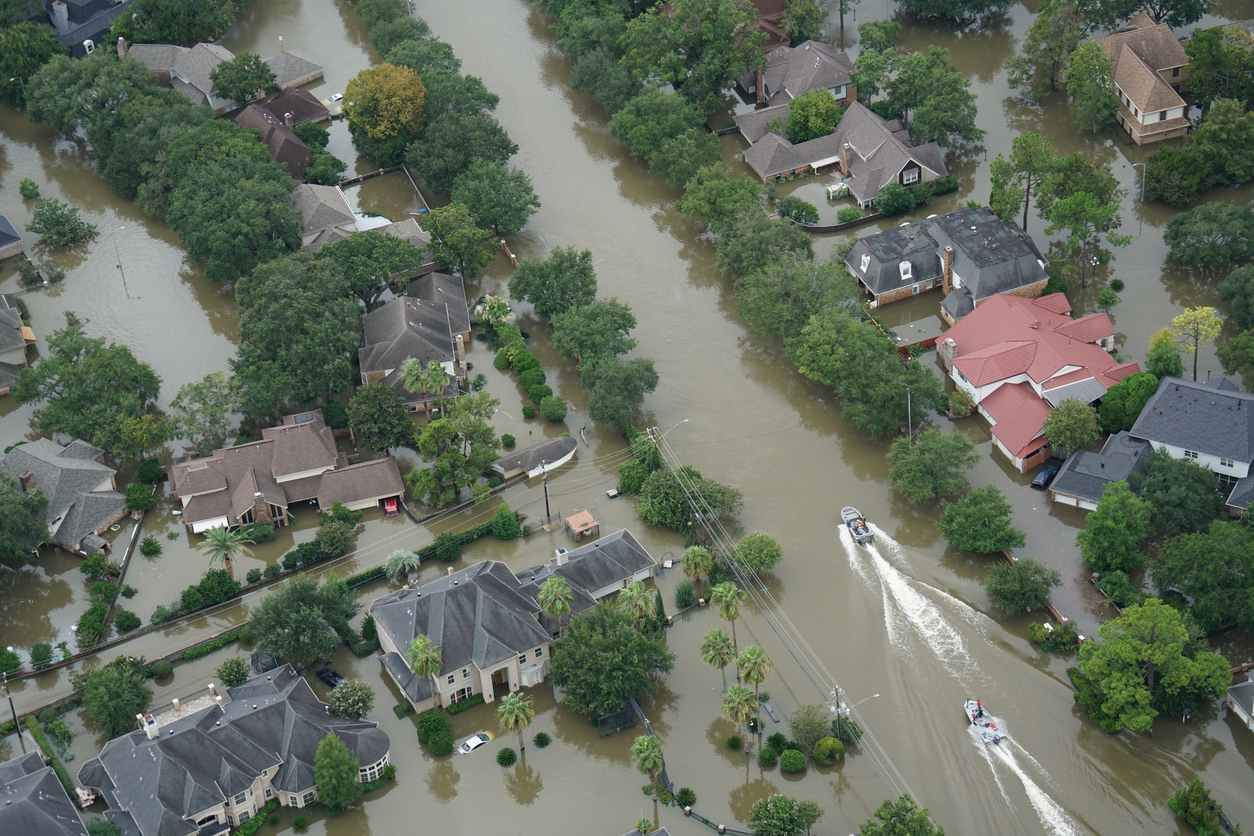But only after Hurricane Harvey swamped their dream home in August 2017 with 7 inches of water did the couple learn something they say they were never told during 18 years there. Their home was built on the edge of a dry reservoir the U.S. Army Corps of Engineers designed to hold water during severe storms to protect downtown Houston from flooding.
Thousands of residents in sprawling subdivisions west of Houston don’t just blame the historic rainfall for the losses they incurred during Harvey. They also fault the federal government.
A trial starting Monday will test the legal claims of these residents and business owners who allege the U.S. Army Corps of Engineers knew homes were at risk of flooding and now, under eminent domain law, owes them compensation.
“How come nobody ever told us?” said Mr. Soares, whose home incurred roughly $100,000 in damage from Harvey. “Nothing from the government or anybody saying ‘Hey, beware, you are buying property inside the reservoir,’” he said.
The U.S. Justice Department, which is representing the government, has argued in court filings that the flooding was a one-time, temporary occurrence that doesn’t reach the necessary legal threshold for payment and that residents should have known they were living in an area vulnerable to flooding.
The Army Corps built the Addicks and Barker dams west of Houston in the 1940s as part of a broader flood-management plan. Unlike some reservoirs, the areas only fill with water during heavy rainfall. Most days, the more than 25,000 acres is a serene expanse of grassy parkland, golf courses and sports fields.
Residents of the neatly-pruned neighborhoods on the edge of the area say it was never clear to them their subdivisions were also part of a reservoir intended to hold water during severe storms.
“Intellectually, I can understand why it happened. I’m not happy it happened. And I think that those people who were the sacrificial lambs should be duly compensated for their sacrifice,” said Todd Banker, who bought a home in the area in 2007 with his wife Christina.
When Harvey hit, the Army Corps closed the gates at the two dams as intended to hold back storm water. The rising pool of water eventually flowed back into the neighborhoods, flooding some 10,000 properties. The Bankers’ home was inundated with a foot of water.
The lawsuits say the severe flooding from the storm qualifies as a “taking” of personal property for the benefit of the federal government that requires compensation under the Fifth Amendment to the U.S. Constitution. In court filings, the government says that while it is “impossible not to feel sympathy” for the plaintiffs’ losses, residents upstream of the dams knew or should have known of the flooding risk “due to past storms, public documents, newspaper articles, and public meetings.”
Residents and their lawyers say it is unreasonable to suggest potential buyers would sift through U.S. Geological Survey maps to learn about the area before buying.
“If they wanted people to know, you just got to come out and tell them,” said Vuk Vujasinovic, a lawyer representing the Bankers.
The Justice Department declined to comment on the trial. The Army Corps didn’t respond to requests for comment.
A related batch of lawsuits is being pressed by residents who lived downstream of the dams and were flooded when the Army Corps intentionally let out water during Harvey that threatened to spill over or break the dams. Those lawsuits won’t go to trial before 2020.
When the dams were built, the area upstream was used primarily for ranching and rice farming. In the 1980s, the government analyzed whether it should buy up more land projected to flood behind the dams in extreme storms—at an estimated cost of $353 million—but chose not to, according to court filings. The land soon got snapped up by private developers.
In a 1986 memo, the Army Corps predicted the current situation. The memo noted the flood zone extended beyond the government’s boundaries. It said that as “the surrounding areas are developed, this may mean that homes in adjacent subdivisions may be flooded. This could result in lawsuits against the Corps of Engineers for flooding private lands.”
he two-week trial will determine whether the government is liable for flood damage at 13 homes and businesses—including the Soares and Banker homes. Once the court determines whether the government is responsible for these “test properties,” that will lay the groundwork for what to do with the rest of the claims.
The government will try to show that some properties upstream would have flooded even if the dams had never been built or the gates hadn’t been closed during the storm.
The judge and parties are set to tour the affected properties during the trial, held in the U.S. Court of Federal Claims. Daniel Charest, one of the lead plaintiffs’ lawyers, said the tour includes signs demarcating the government-owned part of the reservoir. “What it doesn’t disclose is that it can fill about a mile back behind you,” he said. “We want the judge to see that.”
If the test-case plaintiffs win on the question of liability, lawyers will push to certify a class-action for the rest of the affected residents.
Mr. Soares, who works for a Brazilian oil company, said he never would have bought his home had he known the full situation. But he and his wife must stay put now—it would be tough to sell at a reasonable price given what has been revealed, he said. Meantime, Mr. Soares worries about more flooding during another severe storm—something that crosses his mind each day returning from work.
“I think to myself: I’m going back to my home in the reservoir,” he said.














